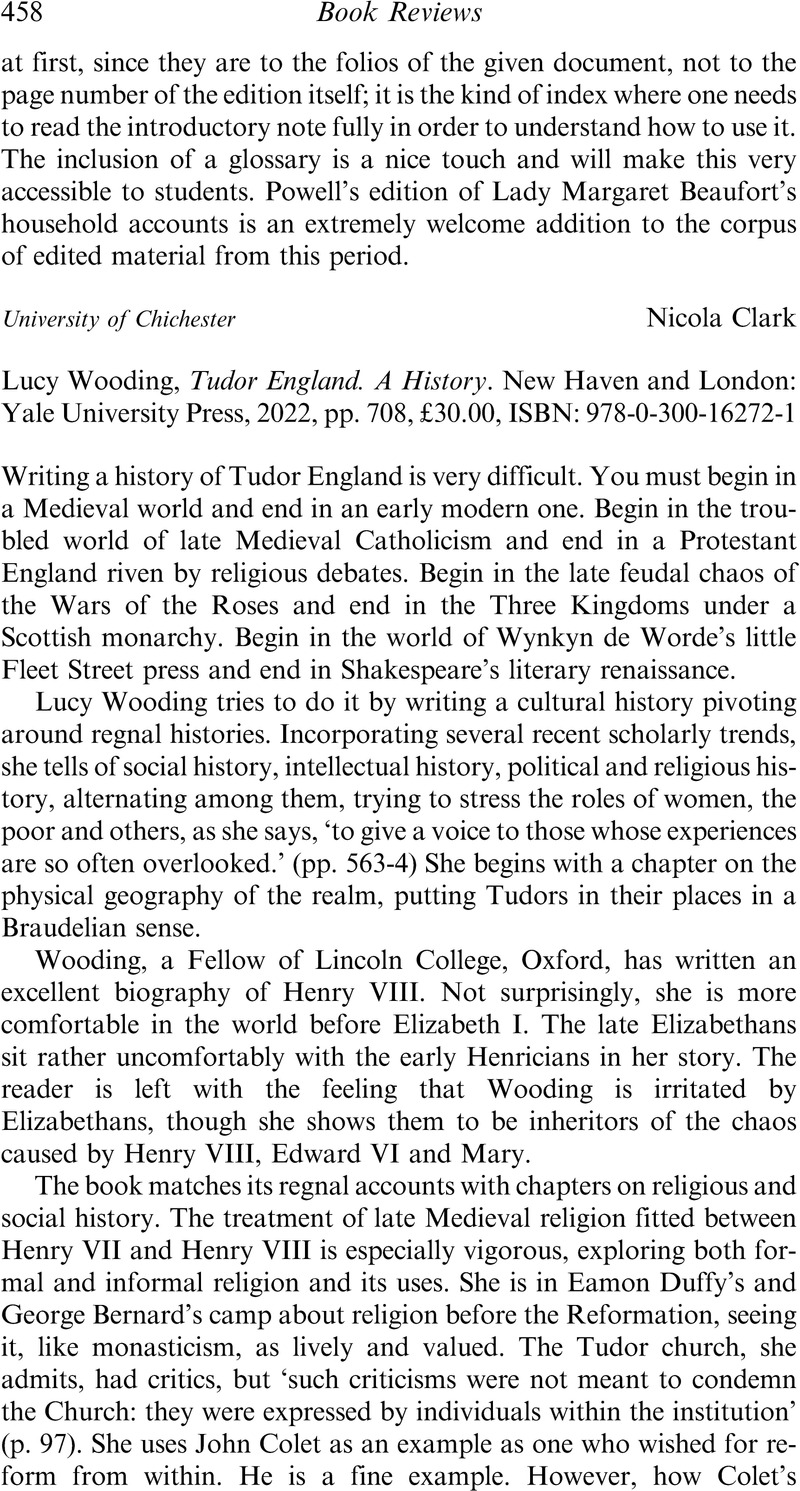No CrossRef data available.
Article contents
Lucy Wooding, Tudor England. A History. New Haven and London: Yale University Press, 2022, pp. 708, £30.00, ISBN: 978-0-300-16272-1
Review products
Lucy Wooding, Tudor England. A History. New Haven and London: Yale University Press, 2022, pp. 708, £30.00, ISBN: 978-0-300-16272-1
Published online by Cambridge University Press: 30 November 2023
Abstract
An abstract is not available for this content so a preview has been provided. Please use the Get access link above for information on how to access this content.

Information
- Type
- Book Review
- Information
- Copyright
- © The Author(s), 2023. Published by Cambridge University Press on behalf of Trustees of the Catholic Record Society


